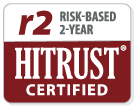Staying on top of healthcare regulatory changes is essential but overwhelming for both providers and health plans. Recent shifts in Medicare Part D prescription premiums, coupled with the Centers for Medicare & Medicaid Services (CMS) transition from the V24 to V28 risk adjustment model, have introduced new complexities for healthcare organizations. These changes, while beneficial for patients in the long run, can create significant administrative burdens and confusion.
Why These Changes Matter
With regulatory changes, it can be complicated to understand how this will affect outcomes, let alone operations and performance. Take for example CMS’ switch from Version 24 (V24) to Version 28 (V28). The shift from V24 to V28 has been a phased change, with risk score changes over a three-year span requiring unique calculations from year to year. Because of the constant changes to the risk score calculation, organizations must adjust their approach to risk adjustment and reimbursement accordingly. For providers working in value-based care (VBC), this can be particularly challenging, as missing even a minor detail can impact outcomes and cost.
The 2024 changes to Medicare Part D offer benefits to patients, including a $2,000 annual out-of-pocket cap and the option to spread payments for prescription drug costs over time. These provisions help patients maintain access to necessary medications without making large financial sacrifices. For health plans, these changes come with increased liability for the cost of medications. With this increased liability, MA plans will need to adjust their risk capture to include a new group of diagnoses and account for Part D with the same focus as Part C, all in a way that is easily actionable for the providers doing the work.
How Curation Health Eases the Transition
At Curation Health, we understand that most systems overwhelm clinicians with an excess of data points, often making understanding the regulatory landscape even harder. That’s why our platform simplifies the process, providing only the most relevant insights at the point of care, ensuring that providers and health plans don’t need to spend valuable time dissecting and understanding the nuances of every regulatory update. By automatically integrating regulatory changes into our rule sets-like the switch from V24 to V28 or meshing Part C and D into one clinical workflow- our platform takes the guesswork out of compliance and risk adjustment documentation.
With our platform, clinicians and administrators don’t need to memorize new rules or worry about performing manual calculations. The system is designed to be user-friendly, allowing healthcare professionals to focus on what matters most—providing high-quality patient care without the added administrative burden.
By simplifying the documentation and compliance process for physicians, Curation Health ensures fewer errors and discrepancies that require health plans to go back for corrections or clarifications. This streamlines workflow and reduces administrative delays, helping insurers maintain compliance and optimize their reimbursement models. The easier it is for providers, the smoother it becomes for health plans to manage regulatory requirements and improve financial performance.
A Differentiator That Drives Value
Curation Health’s accuracy and ability to stay on pace with regulatory changes, while always keeping the provider experience in mind, ensures that our clients can transition smoothly to new models without missing a beat. We’re here to manage the complexities, so providers don’t have to.
With all the uncertainty, having a partner like Curation Health can make all the difference. We’re committed to providing real-time insights and support, helping organizations improve patient outcomes, manage costs, and mitigate regulatory risks, all while simplifying the path to value-based care.

